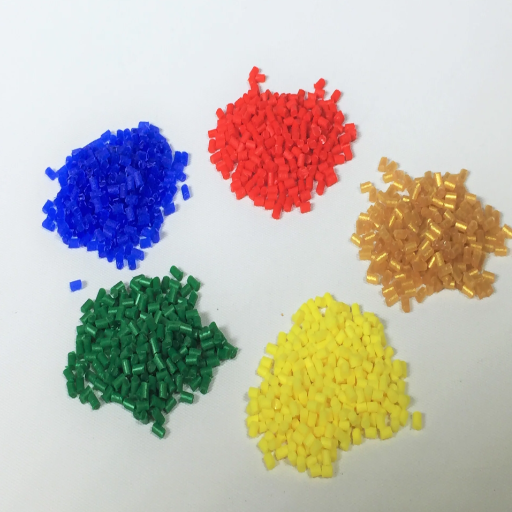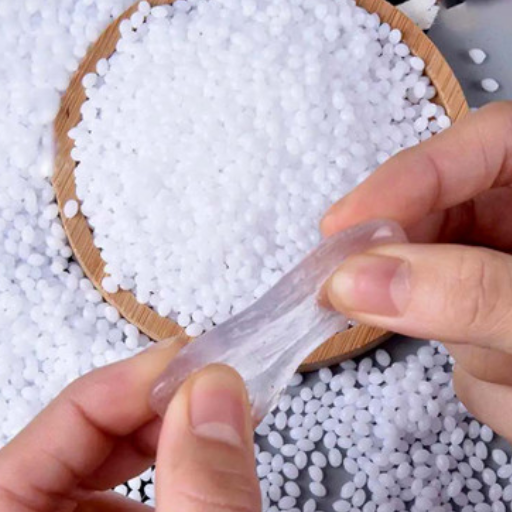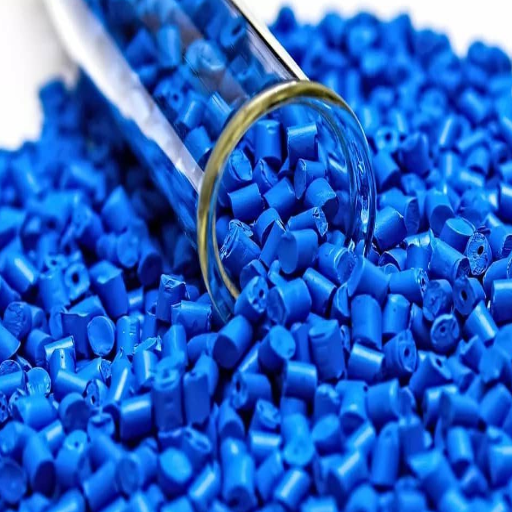Are you wondering how to take your crafting projects up a notch? Poly pellets are a multipurpose and additional material that can make DIY sensory toys as well as weighted plush toys and even blankets. In this article, you will be taken step-by-step on the ways poly pellets can be incorporated into your crafts along with their uses, advantages, and other tips. From an expert or a novice in crafting, comes so much guidance along with inspiring suggestions that exploit the full capabilities of this wonderful material. Cheer up as poly pellets will change the way you work on your creative projects and bring more enjoyment and efficiency into your crafting.
What are Poly Pellets Used For?
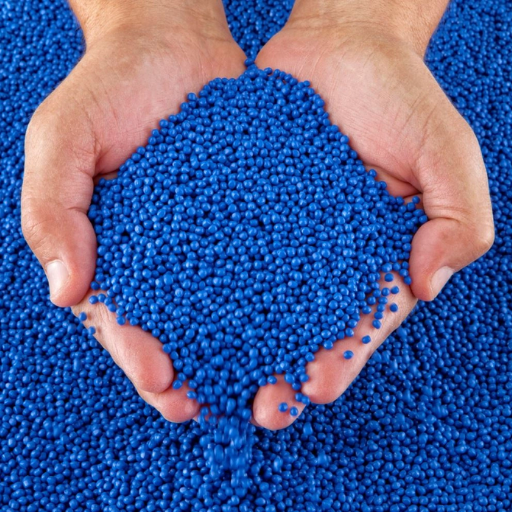
As mentioned earlier, poly pellets are widely used as plastic fillers for various DIY projects. Besides stuffed animals, sensory toys, and weighted blankets, poly pellets can also be used for creating plush toys. On top of that, they serve as an excellent option for stress-relief merchandise, balance training tools, and even bean bags. The adaptability, ease of care, and non-toxic properties make these pellets suitable for many hand-made or machine-made items.
Understanding Weighted Stuffing Beads in Crafts
Weighted stuffing beads are made of a particular material that can be used for various craftwork projects. The even weight distribution helps in the construction of sensory tools, stress-relieving devices, and relaxing weighted blankets that encourage concentration and focus. The enhanced structure rounded and filled handiworks are possed due to the small uniform shapes allowing for accurate filling and molding. Furthermore, decorative stuffing beads are quite dependable, simple to maintain, and made of materials, like polypropylene, which guarantee safety and non-toxicity for crafting. Their availability and very low cost add even more to the already popular material among hobbyists and craftsmen alike.
The Role of Poly Pellets in Weighted Blankets
Poly pellets are used as the primary stuffing and weight material in the construction of weighted blankets. According to my research, these durable pellets are crafted from non-toxic polypropylene and possess characteristically uniform dimensions. The granules are uniformly spread within the blanket to exert a gentle, steady pressure on the body, simulating a soothing, enveloping hug. This kind of deep-pressure stimulation is often associated with lowered anxiety, heightened relaxation, and improved sleep. Furthermore, poly pellets are widely sought after by both professional manufacturers and DIY aficionados because they can easily be cleaned and are multifunctional.
Why Use Poly Pellets in Stuffed Animals?
Poly pellets are a preferred option for filling stuffed toys because of their weight, durability, and versatility. Polypropylene pellets between sizes 2 mm to 4 mm are commonly used as filler materials and serve to add weight and improve the tactile feel of stuffed animals. Poly pellets enhance the sensory engagement level of stuffed animals, making them more satisfying to hold and cuddle. Moreover, poly pellets are completely non-toxic and hypoallergenic while being washable as well, assuring safety, maintenance, and ease of care, particularly for children’s toys. Because of these traits, poly pellets are popular and practical.
How to Choose the Right Poly Pellets?
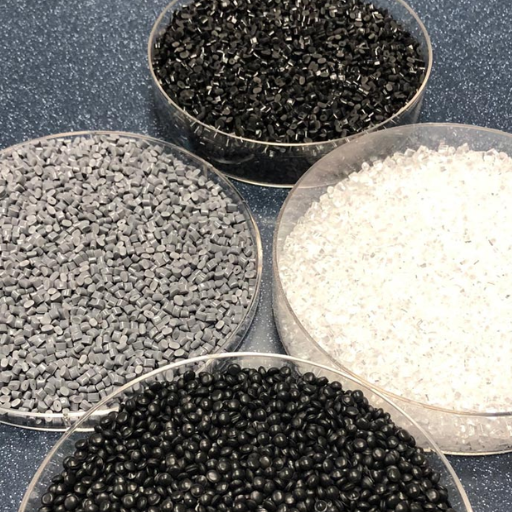
Reflect on the given pointers when choosing poly pellets for your task:
- Material Quality – The safety of the craft demands that the selected pellets are non-toxic, BPA-free, and of good quality, especially for items made for children and pets.
- Size and Texture – The size of the pellets needs to correspond to the desired texture and weight; most projects are easier to accomplish with smoother pellets, while textured ones may offer unique qualities.
- Purpose of Use – For stuffing animals, filling weighted blankets, or therapeutic tools, make sure to modify the pellets to fit the specific craft to improve the outcome.
- Washability – For TheraBlankets or toys, use washable pellets that can endure repeated washing.
- Weight Needs – Establish the weight that is deemed to be optimal for your creation and use pellets that satisfy your weight ideas without compromising on functionality, comfort, or use.
Keeping all these pointers in mind will guarantee that the result meets expectations along with the desired requirements.
Factors to Consider for Premium Polyester Weighted Stuffing Beads
- Bead Size and Shape
For crafting applications, bead sizes from 2mm to 4mm are typical. Precision molded, spherical beads should be chosen to prevent any sharp edges that could damage the fabric or reduce comfort as well as for even weight distribution.
- Material Safety
For therapeutic tasks and those involving pets, children, or even alterable uses, confirm that the polyester beads are non-toxic, hypoallergenic, and free of BPA.
- Weight Capacity
Consider the weight density of the beads if achieving specific project heaviness is necessary. Depending on the craft design, the density should ideally be around 5 lbs per cubic foot for balanced results.
- Washability
Remove dirt using a washing machine or hand washing without risking damage to shape or clumping by choosing durable, water-resistant beads.
- Heat Resistance
If the beads will be used in items such as heating pads, confirm that they can endure moderate temperatures. Generally, a heat resistance rating up to 140°F (60°C) achieves the requirement for most purposes.
With these considerations, ensuring functional and crafting needs are met will allow the selection of premium-weighted stuffing beads crafted from high-grade polyester.
Comparing Fairfield Poly-Fil Poly-Pellets and Other Options
Fairfield Poly-Fil Poly-Pellets has differences in quality and usability when compared to other weighted bead options in the market. Fairfield’s Poly-Pellets are well-known because of their smooth and uniform texture as well as their strength which makes them suitable for weighted blankets, stuffed animals, and therapeutic aids. They’re also washer-dryer safe which means they put up well to routine use. On top of that, they can withstand heat up to 140°F(60°C), mild for many uses, such as heating pads.
Glass beads, on the other hand, are finer and heavier, making them preferable for weight distribution in blankets, though they tend to be pricier. Recycled plastic beads do offer a more sustainable alternative, but these lack the uniformity and strength of more expensive brands like Fairfield. Generic plastic beads are more suitable for crafters looking for a bargain, but these may not only be outperformed by laundry or heat applications but also show irregularity in size or shape.
All in all, remunerating for top-tier weighted stuffing needs, Fairfield Poly-Fil Poly-Pellets are unquestionable due to the exceptional balance of quality, reliability, and affordability.
Understanding Polypropylene Weighted Stuffing Material
Polypropylene weighted stuffing material is non-toxic. These attributes make it a popular option for crafting and therapeutic products like plush toys, draft stoppers, and sensory products. Polypropylene is made from food-grade, BPA-free materials, making it safe and non-toxic. It also offers additional benefits such as resistance to moisture, easy maintenance, and being hypoallergenic.
Key Benefits:
- Durability: Polypropylene does not break down easily over time, maintaining its integrity under normal use.
- Moisture Resistance: It resists absorbing water, which prevents mold and mildew growth, making it ideal for washable products.
- Non-Toxicity: BPA-free and hypoallergenic, ensuring suitability for children and pets.
- Uniformity: The pellets have a consistent size and shape, ensuring an even weight distribution in projects like blankets.
Due to its consistent performance and safety features, polypropylene weighted stuffing material is an overall superior option for DIY enthusiasts and crafters. Its technical reliability ensures that a wide range of projects can be completed effectively.
How to Use Poly Pellets Effectively?
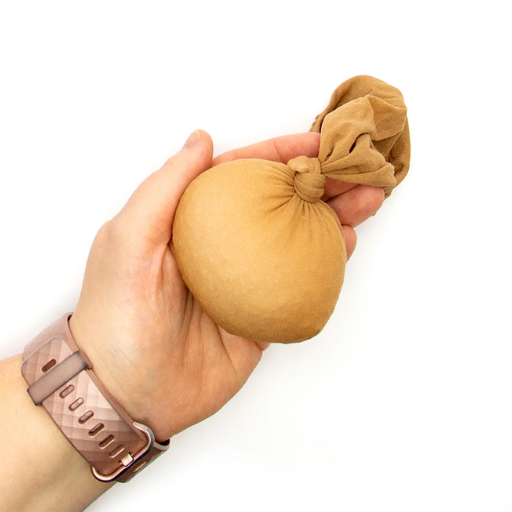
Effective usage of poly pellets also requires foresight and application strategies to get the best outcome for your project. Here are some useful tips:
- Determine the Purpose – As with everything else, make poly pellets as specific as possible by determining their purpose; are you adding them to stuffing items, making sensory tools, or designing weighted blankets? Have a direction and approach.
- Select the Right Amount – According to the weight and size of your project, measure the poly pellets to be used precisely. Be accurate to beat the possibility of overstuffing, or underweighting your work.
- Contain Pellets Appropriately – Employ fabric pockets, pouches nudged into seams, or compartments to contain poly pellets and avoid shifting or leakage on your crafted items. Stuffed toys can have small sections sewn so that the weight gets evenly dispersed.
- Combine with Other Fillers – For more comfortable projects, use poly pellets along with softer stuffing materials like fiberfill to retain some weight while providing added comfort.
- Seal Properly – Pouring pellets can easily spawn excessive stuffing; make certain all ends and seams are sewn shut. Adding extra security with zippers or double stitching in some designs can prove useful.
- Consider Washing Instructions – The fabric used should not be restricted to being poly and non-washable, as some project designs can lead to washing being necessary. Also, ensure the pellets allowed onto the fabric will dry quickly to avoid any damage and mold.
By incorporating these methods, poly pellets can be utilized efficiently across a wide variety of crafting applications.
Techniques for Easy Pour and Storage
- Use a Funnel or Spout – A funnel and any container with a spout is a good choice when trying to pour poly pellets if the aim is not spilling. Pouring using this technique will guarantee minimal waste which is critical in cases where precision is paramount.
- Work in Small Batches – Each pod should be treated as a single entity to avoid the need of different parts all at once. Smaller portions will aid in achieving better control over the pile while preventing spilled pellets.
- Opt for Resealable Containers – Poly pellets should be stored in see-through containers or zip-top bags. Doing so shelters them from moisture, dirt, and unintentional spills while still being accessible for later use.
- Label and Organize – Organizing pellets in dedicated spaces eliminates the problem of different varieties being stored together. Also, labeling containers with specific details like their intended purpose makes identifying them easy.
Adjustments in storage and pouring methods will greatly minimize the hassles and mess that come with poly pellets.
Creating a Uniform Fill with Soft Crafts
I make certain that the poly pellets are properly distributed throughout the entire project in order to achieve a uniform fill while working with soft crafts. For plush toys and weighted blankets, I use small sections or compartments to contain the pellets. This helps balance the weight and stabilizes the pellets’ position over time. Additionally, I pack the pellets with other stuffing materials, carefully stratum rearranging with every adjusting movement until the required look and dense softness is achieved. Slowing down during stuffing is the ideal approach if I want to ensure an expertly smooth finish.
Tips for Filling Bean Bags and Cornhole Bags
- Choosing the Right Filling
Some of the common fillings for bean bags include expanded polystyrene (EPS) beads, shredded foam, or natural materials such as beans and rice. EPS beads have greater structural strength while also being lightweight; foam offers a softer feel. For cornhole bags, traditional fillings such as whole-kernel corn provide an authentic experience, whereas resin pellets give a modern, weather-resistant alternative.
- Determining the Proper Amount
The optimal amount of filling combines comfort and ease of movement. For bean bags, strive to fill the bag to around 80% full; this allows space for air and adjustments. Cornhole bags should contain approximately 14 to 16 ounces of filler to meet the weight regulation and function properly.
- Proper Filling Techniques
To prevent the fillings from spilling out and evenly distribute, utilize a funnel or scoop. As you fill the bag, shake it periodically to ensure the material is settled evenly. When filling larger items, such as bean bags, having a second person to assist with holding the opening as you fill is beneficial.
- Securing and Checking
Upon filling, seal the opening in such a way that no leaks will occur. For bags that will see heavy use, such as bean bags, close them with double stitching or reinforced zippers. For cornhole bags, the seams must be strong enough to hold the stitching and make the bag have enough weight to be balanced when thrown.
Adhering to these guidelines will allow for a professional and polished appearance and feel for the user, and support wearable durability and usability for the bean bags and cornhole bags.
What Makes Poly-Pellets Unique?
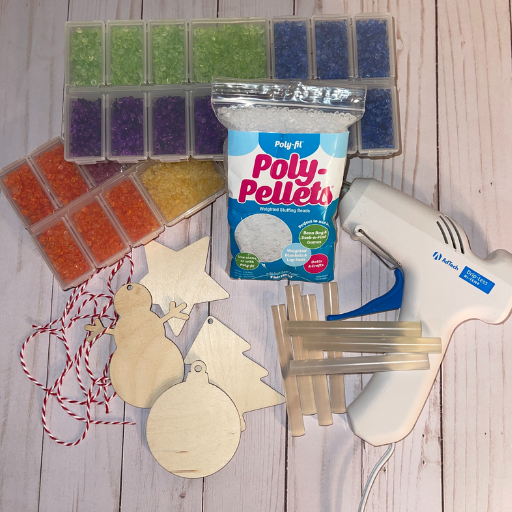
Versatility, durability, and ease of use are what make poly-pellets unique. Poly-pellets are made from non-toxic plastic making them safe for various crafting and therapeutic activities. The optimal size of poly-pellets ensures uniform distribution of weight which makes them great for use in weighted blankets, soft toys, and other sensory items. In addition, poly-pellets are moisture-resistant and washable which ensures long-lasting hygiene. All of these qualities make poly-pellets a favorable choice for professionals and hobbyists alike.
The Benefits of Smooth Edge and Oval Contour
Some of the key advantages offered by smooth edges and oval contours are comfort, safety, and functionality. The rounded and smooth edges remove the risk of sharp corners which can be detrimental to safety which makes these suitable for children’s products or sensory therapy. The positive tactile effect enhancement and more even distribution of weight and force oil contour impacts make the oval contour essential for pleasant interactions during use.
The smooth-surfaced and oval-shaped poly-pellets, from a technical view, are designed for decreased friction and wear so that the life of the materials they are incorporated into is lengthened. For instance, in weighted blankets, this design alleviates stress on the fabric, and the filling remains evenly distributed over time. Some parameters, such as a diameter of approximately 3-5 mm in size and a weight of about 2.5 g per 100 pellets, are empirically known to balance comfort and functionality. The ergonomic geometry of these shapes renders them adaptable and efficient for use in diverse crafting and therapeutic projects, enhancing the quality of the products and the experience of the users as well.
Why Choose Made in the USA Products
Buying Made in the USA USA helps local employment opportunities while ensuring ethical labor practices, and more developed products are of higher quality. American manufacturers produce goods of better quality because they have to comply with strict safety and environmental regulations, as well as make the product durable, reliable, and environmentally conscious. Moreover, buying American products helps to strengthen the economy by keeping the supply chain regional and generating new employment opportunities in different sectors. These items usually cause less environmental damage than overseas shipping, enabling them to be a better sustainable option. When consumers purchase manufactured goods in the USA, it enables the country to set fair standards for labor, economic advancement, and superior craftsmanship.
Where to Buy Poly Pellets?
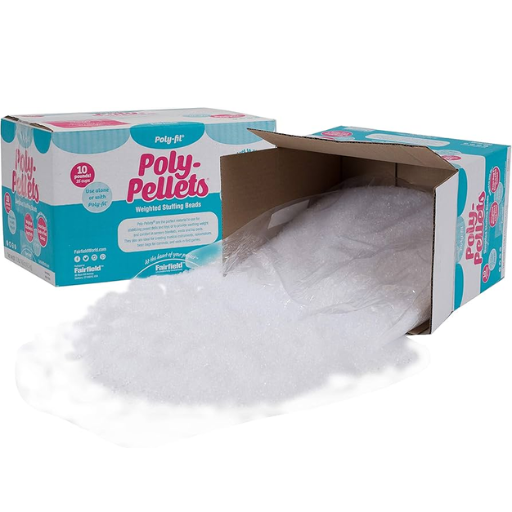
Online retailers and brick-and-mortar stores sell poly-pellets extensively. Many popular e-commerce websites, including Amazon and Etsy, offer numerous listings with accompanying reviews to aid customers in making an informed purchasing decision. Local craft stores such as Michaels or Joann Fabrics might also keep poly-pellets in the crafting supplies section. For specialty or bulk purchases, manufacturers’ websites and wholesale distributors guarantee the best prices without losing quality.
Exploring Options with Free Shipping
While searching for poly-pellets with free shipping, I came across Amazon which has numerous options, especially for Prime members due to the rampant free shipping offers. On Etsy, independent sellers also sell poly-pellets, with some providing free shipping promotions based on order value or geographical location. Furthermore, Walmart’s website has competitively priced poly-pellets and many of their products are eligible for free shipping when the requisite amount is spent. All these sites are very efficient for side-by-side comparison of the prices and the availability of free shipping, proving to be very cost and time-efficient.
Finding the Best Deals on Bag of Poly-Pellets® Craft Beads
Given the problem attached to looking for supplier websites for Bag of Poly-Pellets® Craft Beads, I can cite Amazon as a top recommendation due to having an extensive selection of their competitors’ products, not to mention cheap prices and free shipping for Prime members. Amazon customer reviews are also very helpful for decision-making. Walmart also offers competitive prices for poly-pellets, most of their products are also eligible for free shipping after reaching a certain amount. Last but not least, Joann Fabrics is a well-known poly-pellets supplier and is well-known among crafters because the store constantly has online and offline sales on crafting materials. All of these websites combined provide affordable solutions to fulfill your crafting needs without having to break the bank.
References
Frequently Asked Questions (FAQ)
Q: What are poly pellets and how are they used in crafting?
A: Poly pellets are small, round plastic beads that serve as weighted stuffing material, perfect for adding flexibility and weight to stuffed animals, pillows, and other soft crafts. They help create a lifelike contour to craft projects.
Q: How do poly plastic pellets compare to beanbag foam beads?
A: While both materials are used for stuffing, poly plastic pellets provide a more uniform weight distribution and a firmer feel compared to beanbag foam beads. This makes them ideal for projects where structure and shape are necessary.
Q: What makes poly-pellets® craft beads easy to use?
A: Poly-pellets® craft beads are designed to be easy pour and store, especially with the convenient 24oz sized bag. This makes handling and measuring simple, reducing mess and making crafting more efficient.
Q: Can poly pellets be used in games and arts and crafts?
A: Yes, poly pellets are versatile and can be used in a variety of applications, including games, arts and crafts, and any project where weighted stuffing is beneficial.
Q: Are poly pellets suitable for pillow stuffing?
A: Poly pellets can be used in pillow stuffing to add weight and create a firmer, more supportive cushion. They are ideal for projects where a more defined shape is desired.
Q: How do you ensure a uniform distribution of poly pellets?
A: To achieve a uniform distribution, it is important to pour the pellets slowly and evenly into the project, allowing them to spread out evenly. This helps maintain an even weight and contour.
Q: Are poly pellets safe for use in children’s toys?
A: Poly pellets are generally safe for use in children’s toys when properly sealed within the toy. It is important to ensure that seams are secure to prevent leakage.
Q: How do poly pellets enhance the flexibility of soft crafts?
A: Poly pellets add a weighted element that allows soft crafts to contour to various shapes, providing a more lifelike and flexible finish compared to other stuffing materials.
Q: What is the best way to store poly pellets?
A: Poly pellets are best stored in their original easy pour and store packaging or a sealed container to prevent spills and keep them dry and clean.

